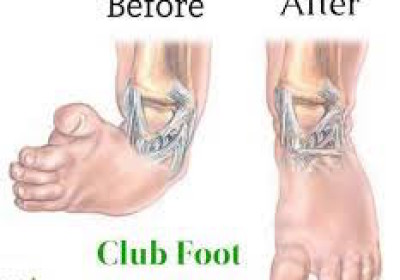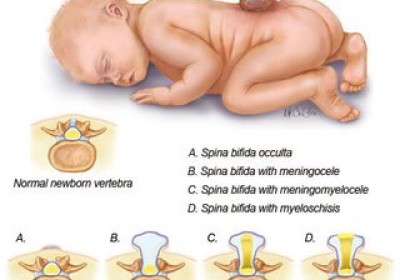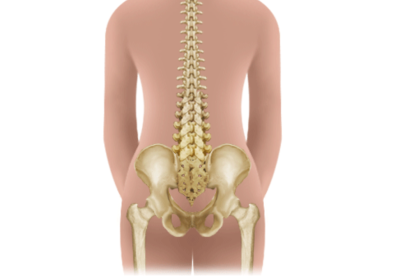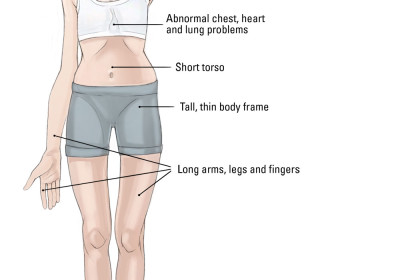- Home
- Resources
- Patient Release Form to obtain your records from other Physician
- Patient Release Form to release your records to other Physician
- Insurance and Billing
- What should I bring to Appointments
- Glossary in English
- Glosarios de Examenes de diagnostico
- High School Sports Injuries
- Stretching Exercises for Sports
- Childhood Obesity and bone, joint & muscle health
- News
- Staff
- Conditions
- Galleries
- FAQ
- Zink Blog
- Contact
Spina Bifida
Spina Bifida is the most common permanently disabling birth defect in the United States.
Spina Bifida literally means “split spine.”
Spina Bifida happens when a baby is in the womb and the spinal column does not close all of the way. Every day, about 8 babies born in the United States have Spina Bifida or a similar birth defect of the brain and spine.
What causes Spina Bifida?
No one knows for sure. Scientists believe that genetic and environmental factors act together to cause the condition.
What are the different types of Spina Bifida?
- Occult Spinal Dysraphism (OSD)
Infants with this have a dimple in their lower back. Because most babies with dimples do not have OSD, a doctor has to check using special tools and tests to be sure. Other signs are red marks, hyperpigmented patches on the back, tufts of hair or small lumps. In OSD, the spinal cord may not grow the right way and can cause serious problems as a child grows up. Infants who might have OSD should be seen by a doctor, who will recommend tests. - Spina Bifida Occulta
It is often called “hidden Spina Bifida” because about 15 % of healthy people have it and do not know it. Spina Bifida Occulta usually does not cause harm, and has no visible signs. The spinal cord and nerves are usually fine. People find out they have it after having an X-ray of their back. It is considered an incidental finding because the X-Ray is normally done for other reasons. However, in a small group of people with SBO, pain and neurological symptoms may occur. Tethered cord can be an insidious complication that requires investigation by a neurosurgeon. - Meningocele
A meningocele causes part of the spinal cord to come through the spine like a sac that is pushed out. Nerve fluid is in the sac, and there is usually no nerve damage. Individuals with this condition may have minor disabilities. - Myelomeningocele (Meningomyelocele), also called Spina Bifida Cystica
This is the most severe form of Spina Bifida. It happens when parts of the spinal cord and nerves come through the open part of the spine. It causes nerve damage and other disabilities. 70 to 90% of children with this condition also have too much fluid on their brains. This happens because fluid that protects the brain and spinal cord is unable to drain like it should. The fluid builds up, causing pressure and swelling. Without treatment, a person’s head grows too big, and may have brain damage. Children who do not have Spina Bifida can also have this problem, so parents need to check with a doctor.
How is Spina Bifida Treated?
A child with Meningomyelocele usually is operated on within two to three days of birth. This prevents infections and helps save the spinal cord from more damage.
A child with Meningocele usually has it treated with surgery, and more often than not, the child is not paralyzed. Most children with this condition grow up fine, but they should be checked by a doctor because they could have other serious problems, too.
A child with OSD should see a surgeon. Most experts think that surgery is needed early to keep nerves and the brain from becoming more damaged as the child grows.
Spina Bifida Occulta usually does not need to be treated. ‘
What can you do to prevent Spina Bifida?
Women who are old enough to have babies should take folic acid before and during the first three months of pregnancy. Because half of the pregnancies in the United States are unplanned, the Spina Bifida Association asks women to take a vitamin with 400 mcg (0.4 mg) of folic acid each day during the years of their lives when they are possibly able to have children.
Women who have a child or sibling with Spina Bifida, have had an affected pregnancy or have Spina Bifida themselves should take 4000 mcg (4.0 mg) of folic acid for one to three months before and during the first three months of pregnancy.
What is folic acid?
Folic acid is a vitamin that the body needs to grow and be healthy. It is found in many foods, but the man-made or synthetic form in pills is actually better absorbed by our bodies.
What conditions are associated with Spina Bifida?
- Mobility – walking and getting around
- Bladder, Bowel & gastrointestinal disorders
- Latex allergy
- Obesity
- Skin breakdown
- Learning disabilities
- Social issues
- Tendonitis
- Sexual issues
What physical limitations exist?
People with Spina Bifida must learn how to get around on their own without help, by using things like crutches, braces or wheelchairs. With help, it also is possible for children to learn how to go to the bathroom on their own. Doctors, nurses, teachers and parents should know what a child can and cannot do so they can help the child (within the limits of safety and health) be independent, play with kids that are not disabled and to take care of him or herself.
Can Spina Bifida be detected before birth?
Yes. There are 3 tests.*
- A blood test during the 16th to 18th weeks of pregnancy. This is called the alpha-fetoprotein (AFP screening test). This test is higher in about 75–80 % of women who have a fetus with Spina Bifida.
- An ultrasound of the fetus. This is also called a sonogram and can show signs of Spina Bifida such as the open spine.
- A test where a small amount of the fluid from the womb is taken through a thin needle. This is called maternal amniocentesis and can be used to look at protein levels.
*Parents should know that no medical test is perfect, and these tests are not always right.
Can children with Spina Bifida grow up and live full lives?
Yes. With help, children with Spina Bifida can lead full lives. Most do well in school, and many play in sports. Because of today’s medicine, about 90% of babies born with Spina Bifida now live to be adults, about 80% have normal intelligence and about 75% play sports and do other fun activities.
How is Spina Bifida managed?
As type and level of severity differ among people with Spina Bifida, each person with the condition faces different challenges and may require different treatments.
The best way to manage Spina Bifida is with a team approach. Members of the team may include neurosurgeons, urologists, orthopedists, physical and occupational therapists, orthotists, psychologists and medical social workers.






